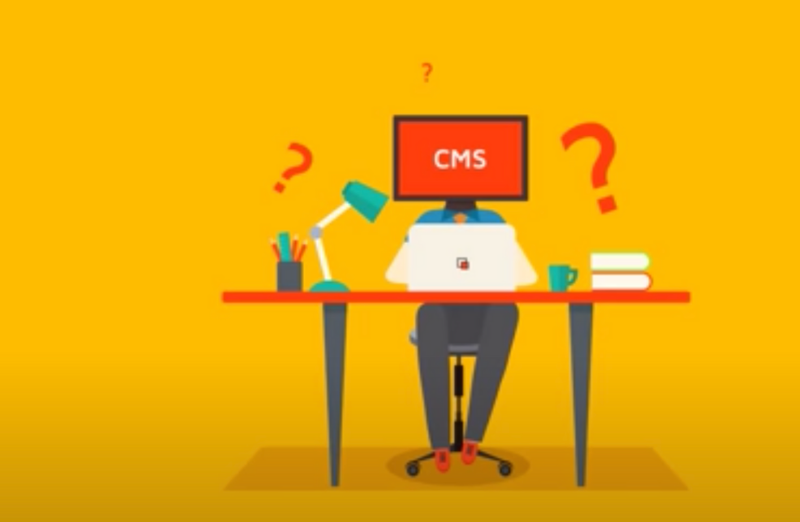
Headless content management systems (CMS) are quickly rising in popularity due to their flexibility and reasonable pricing. A headless CMS provides content management capabilities without dictating the front-end technologies or visual presentation layers. Instead, a headless CMS defines the information architecture and exposes content via REST APIs to be leveraged across digital channels.
A headless CMS offers many benefits, including expedited content delivery, greater control over how and where your content appears, the ability for developers to use their favorite tools and frameworks, and flexibility to use third-party integrations and new technologies. With a headless CMS, you can host content, digital assets, and files with low costs.
With so many platforms in the headless CMS market, it can be difficult to navigate the landscape and determine which headless CMS is right for you. Some of the most popular headless CMS platforms are Contentful, ButterCMS, Contentstack, Prismic, GraphCMS, and Directus, but there are many others. When choosing a headless CMS, there are several factors to keep in mind to make sure your selected system matches your unique needs so you can get the most out of your tools.
Understanding Your CMS Alternatives
Before you choose a headless CMS, consider if a headless CMS is really what you want. Two alternatives to a headless CMS are a web CMS and a digital experience platform CMS. If a headless CMS is like a road bike, the web CMS and digital experience platform are like a Vespa and Harley, respectively. Both of these options provide more functionality than a headless CMS but may be more than you’re looking for in terms of both cost and functionality.
Web CMS: “The Vespa”
A step above the headless CMS is a web CMS, which provides organizations with a full web stack and built-in content management capabilities. These platforms often include additional patterns and tools for integrating with other digital tools to complete the customer experience. Some popular web CMS platforms are Sitefinity and Umbraco CMS. These provide more capabilities than a headless CMS but require additional skill sets and higher costs to implement, operate, and maintain.
Digital Experience Platform: “The Harley”
A digital experience platform (DXP) CMS provides rich, out-of-the-box functionality and a greater potential for building out and scaling the platform beyond content management purposes. Three popular options include Episerver, Adobe Experience Manager, and Sitecore. The robust, out-of-the-box features such as personalization capabilities, on-page editing, search functionality, and built-in analytics allow for a potentially faster speed to market. However, these rich features come with significantly higher licensing costs and a reduction in flexibility. Developers must know the nuances of working with these systems.
Headless CMS: “The Road Bike”
With a headless CMS, you may lose some features that you would have gotten with a web CMS or a DXP. However, a headless CMS offers a low-cost, flexible solution with a lower barrier to entry than the alternatives. Some headless CMS options utilize modular content blocks, giving content editors the ability to create or edit pages by using existing, predefined blocks. The API-first approach of a headless CMS will allow your developers to work hand-in-hand with the editorial team and specifically develop for all content types. The universal API access allows you to retrieve your content via REST APIs from any website, device, or platform. This flexibility allows you to add strategic CMS capabilities onto an existing infrastructure.
Selecting the Best Headless CMS for You
After you consider the alternatives to a headless CMS and decide it is the right approach for you, compare different headless CMS options with the following factors in mind: budget, scalability, platform maturity, compatible technology stacks, and content architecture customization.
Budget
One of the advantages of a headless CMS in general is the low cost compared to alternatives. While a DXP may cost hundreds of thousands of dollars per year, a headless CMS costs anywhere from under $100 to a few thousand per month. Each headless CMS has multiple pricing tiers with different features provided at each tier. We compared the top headless CMS options and found similarities in the pricing structures. The CMSs reviewed had an average of three tiers based on the allowed number of roles, users, environments, locales, content types, records, and support.

Each headless CMS provider has a few key differences in the features offered at each pricing tier, so we recommend comparing them in detail and ensuring the features you need are available at your budget.
Scalability
Before choosing a headless CMS, you need to consider your business goals and determine if the CMS will scale with your business needs. If your company is quickly growing and you are rapidly hiring new people, you may run into issues related to limits on the number of user accounts and roles allowed on the CMS. If you have plans to expand your business geographically, you need to check that the CMS you choose can support the number of languages you need. Goals related to your website traffic are affected by the speed, performance, reliability, and uptime of the CMS. If you want a highly engaging website with many pages and an abundance of high-quality images, you need to consider API request limits.
Not sure where to start your analysis? Take an inventory of the estimated number of pages you will have in the headless CMS. Compare your estimation with the amount of records allowed at your pricing tier. In addition to estimating the number of pages, estimate the number of content types and page templates you need, as many headless CMSs limit you to a number of content types.
Research case studies and success stories of other websites using the headless CMS to determine if there is a precedent of other businesses using the CMS at your size. One headless CMS might be great for a website with 25 pages, but you may run into issues if your website has 2,500 pages and the headless CMS has never had to support that size. At that size, your API responses may slow down and your builds may become longer, which can be cumbersome for users and developers.
Platform Maturity
Platform maturity is another factor to consider when choosing a headless CMS. Platform maturity plays an important role in the quality of experience you have working with the CMS. An immature CMS can cause headaches when you run into new issues or unsupported capabilities. Consider the longevity of the CMS, maturity of the CMS and key features, and availability of support before selecting a headless CMS.
Longevity – The headless CMS is a relatively new technology. When it gained popularity, many different options flooded the market. As competition grew, many headless CMSs survived, but some did not. A helpful benchmark is to ask yourself if it will still be around in five years. If not, it is probably not worth your time and investment.
Maturity – Determine if the CMS is established and proven by looking into how long it has been around. If you select a leading or even a bleeding-edge technology, be prepared to face some growing pains that come with using a new platform. Take a look on GitHub, the CMS’s website, and forums for open issues. If there are a number of open issues, that might be a red flag. Take a minute to look a little deeper if there are any bugs that may affect your usage of the CMS.
Key Features – Even though your CMS may be well established, some features you may want to use may be new. For example, we implemented a headless CMS for a client who wanted their content to be in rich-text format to make it easier for non-technical editors to input content. The headless CMS the client had chosen had a rich-text editor, but it was a recently released beta feature. Because of this, we discovered bugs while working with the feature. In addition, third-party translator services did not yet have the ability to translate the rich text content in the CMS, resulting in the need to collaborate with the CMS’s development team to correct the bugs and find workarounds before proceeding. Before selecting a headless CMS, compile a list of the required features and content types, then determine if they are still in evolution or in a more stable state in the CMS. Most CMSs provide a roadmap detailing the features they plan to release over time. Make sure the specific features you want to use are established or will be established when you would like to use them.
Availability of Support – Lastly, find out what kind of support the CMS has on their side. Can you ask the developers questions? Is there a comprehensive knowledge base around it? Are there support options you can purchase or subscribe to? If you need help, are there people you can reach out to? A more established CMS usually has an exhaustive knowledge center with detailed documentation and answers to frequently asked questions that will save time when working with the CMS.
Compatible Technology Stacks
Ensure there is a match between the development skills on your team and the support from the CMS. Ask yourself if you have the people required to make the changes you want.
One way to verify the CMS works with your desired technology stack is by going to the website of the CMS you are considering. Look under documentation to find the SDKs provided by the CMS and verify the language and framework you want to use has an SDK provided. For example, if your goal is to build a website in .NET and the CMS you would like to use does not have an SDK for .NET, your developers would either have to start from scratch, increasing the difficulty of the project along with the time, cost, and scope, or you would have to train or hire developers with the necessary skills to maintain your CMS.
Content Architecture Customization
Perhaps one of the most desirable features of using a headless CMS is the potential for customization of your content, such as unique content blocks and validations. This is especially useful for situations that require more than what a pre-templated product can bring you.
Content Customization – When choosing a headless CMS, you need to consider how much content customization you require. Think about the types of pages your site contains and what will go in them. If you want to leverage reusable content, you may require the ability to divide pages into different sections such as title, hero image, author, body, footer, sidebar, etc. Does the headless CMS you are considering allow defining custom content types like this? Some providers will allow this capability but put a limit on the number of custom content types allowed.
Page Templates – Also consider whether or not you need page templates. If all the pages on your site follow the same layout, this may not be necessary for you. However, if you have different types of pages with different layouts, you will want to look at how your headless CMS handles this. Some headless CMSs will count page templates as just another content type, and as such, have a limit on the number allowed.
Custom Restrictions or Field Validations – Take a look at whether or not you need the ability to define custom restrictions or validations on fields. Do you need to mark fields as required for a page? Do you need to restrict a field to certain content types or content length? Not all headless CMS options will allow you to customize fields in this way. Specifically, headless CMSs vary greatly in the level of permission control. If a headless CMS allows permission control, a lot of them will only allow this to the schema level instead of the field. Double check that your permission control needs are met with the headless CMS you choose.
Content Types – Think through the different types of content you have, making note of any anomalies. For example, we worked with a client who required interactive quizzes on their user-facing website. This was not a feature natively supported by their CMS. However, the CMS made it easy to add custom JavaScript to build the quiz. While working with this client, we also came across other types of content that were not supported by their CMS. Other examples of possibly-unsupported functionality include any on-click animations, custom widgets, or slideshows. Before choosing a CMS, try to call out any content types that could fall in this category so you can plan accordingly.
Summing It All Up
Implementing a headless CMS can be an exciting opportunity for a business because it allows for increased focus on website development without worrying about content delivery. However, with so many options available, it can be difficult to determine which is right for you. Investing valuable time in carefully researching options and assessing against your unique requirements of a headless CMS will help you rest easy knowing you made the best choice. By considering these factors, you will reduce the risks involved when choosing a headless CMS and reap all the benefits of speed, flexibility, and ease of integration that you desire.
Need Help Choosing a Headless CMS?
Still need help determining if a headless CMS is right for you or navigating the landscape of headless CMSs to determine which one is a good fit? We’d love to help out and leverage our past experience! Reach out to us at findoutmore@credera.com to learn more.
Contact Us
Ready to achieve your vision? We're here to help.
We'd love to start a conversation. Fill out the form and we'll connect you with the right person.
Searching for a new career?
View job openings






